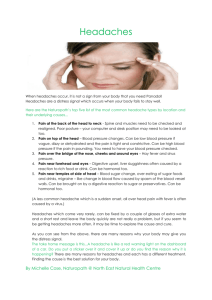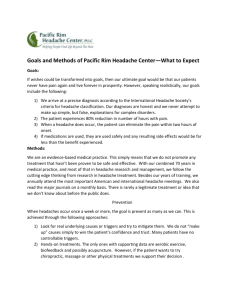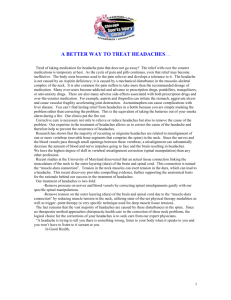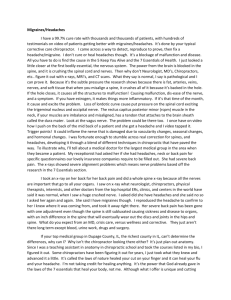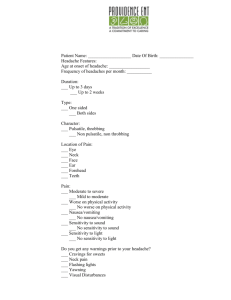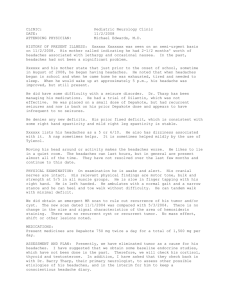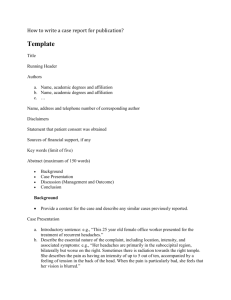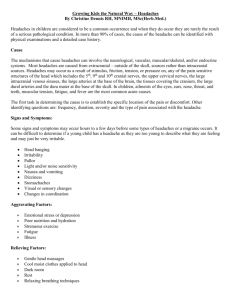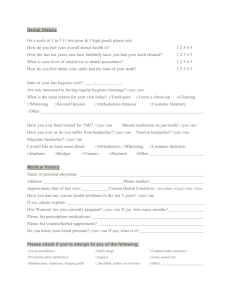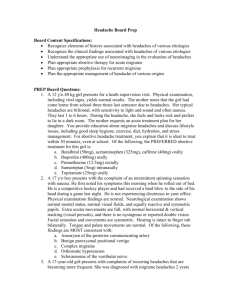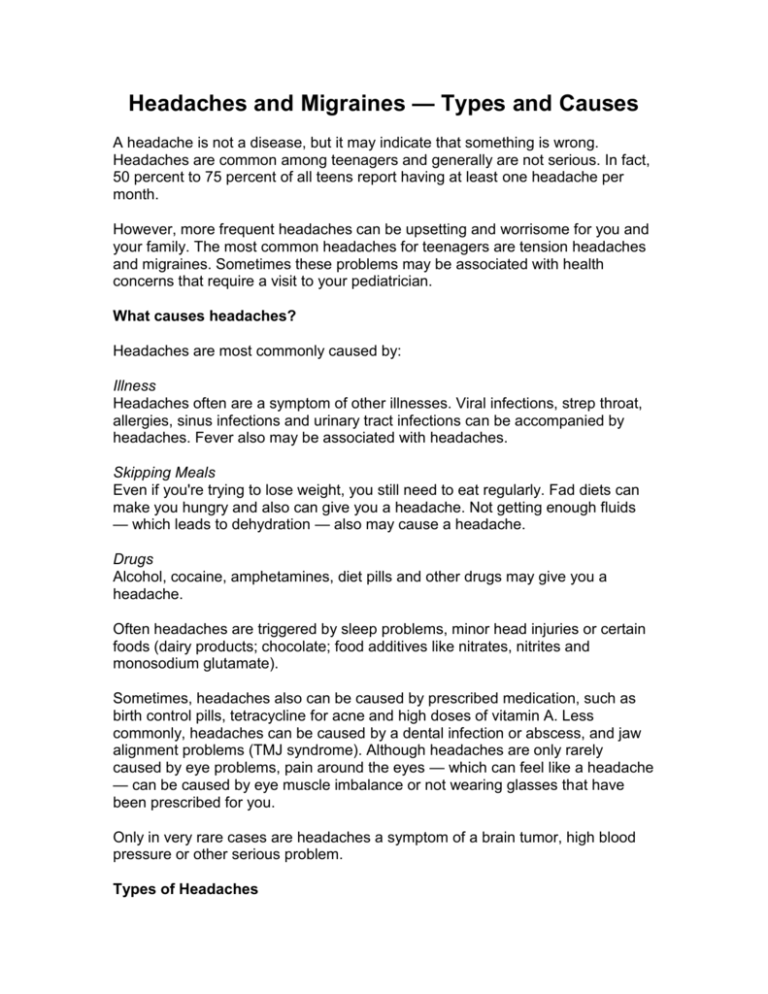
Headaches and Migraines — Types and Causes
A headache is not a disease, but it may indicate that something is wrong.
Headaches are common among teenagers and generally are not serious. In fact,
50 percent to 75 percent of all teens report having at least one headache per
month.
However, more frequent headaches can be upsetting and worrisome for you and
your family. The most common headaches for teenagers are tension headaches
and migraines. Sometimes these problems may be associated with health
concerns that require a visit to your pediatrician.
What causes headaches?
Headaches are most commonly caused by:
Illness
Headaches often are a symptom of other illnesses. Viral infections, strep throat,
allergies, sinus infections and urinary tract infections can be accompanied by
headaches. Fever also may be associated with headaches.
Skipping Meals
Even if you're trying to lose weight, you still need to eat regularly. Fad diets can
make you hungry and also can give you a headache. Not getting enough fluids
— which leads to dehydration — also may cause a headache.
Drugs
Alcohol, cocaine, amphetamines, diet pills and other drugs may give you a
headache.
Often headaches are triggered by sleep problems, minor head injuries or certain
foods (dairy products; chocolate; food additives like nitrates, nitrites and
monosodium glutamate).
Sometimes, headaches also can be caused by prescribed medication, such as
birth control pills, tetracycline for acne and high doses of vitamin A. Less
commonly, headaches can be caused by a dental infection or abscess, and jaw
alignment problems (TMJ syndrome). Although headaches are only rarely
caused by eye problems, pain around the eyes — which can feel like a headache
— can be caused by eye muscle imbalance or not wearing glasses that have
been prescribed for you.
Only in very rare cases are headaches a symptom of a brain tumor, high blood
pressure or other serious problem.
Types of Headaches
Tension Headaches
These often feel like a tight band is around your head. The pain is dull and
aching and usually will be felt on both sides of your head, but may be in front and
back as well. Pressure at school or at home, arguments with parents or friends,
having too much to do, and feeling anxious or depressed can all cause a
headache.
Migraines
This type of headache is often described as throbbing and usually felt on only
one side of your head, but may be felt on both. A migraine may make you feel
lightheaded or dizzy and/or make your stomach upset. You may see spots or be
sensitive to light, sounds and smells. If you get migraines, chances are one of
your parents or other family members also have had this problem.
A third, less common, type of headache is called a psychogenic headache.
Psychogenic headaches are similar to tension headaches, but the cause is an
emotional problem such as depression. Signs of depression include loss of
energy, poor appetite or overeating, loss of interest in usual activities, change in
sleeping patterns (trouble falling asleep, waking in the middle of the night or too
early in the morning) and difficulty thinking or concentrating.
© COPYRIGHT AMERICAN ACADEMY OF PEDIATRICS, ALL RIGHTS RESERVED.
American Academy of Pediatrics, 141 Northwest Point Blvd., Elk Grove Village, IL, 60007, 847-434-4000

